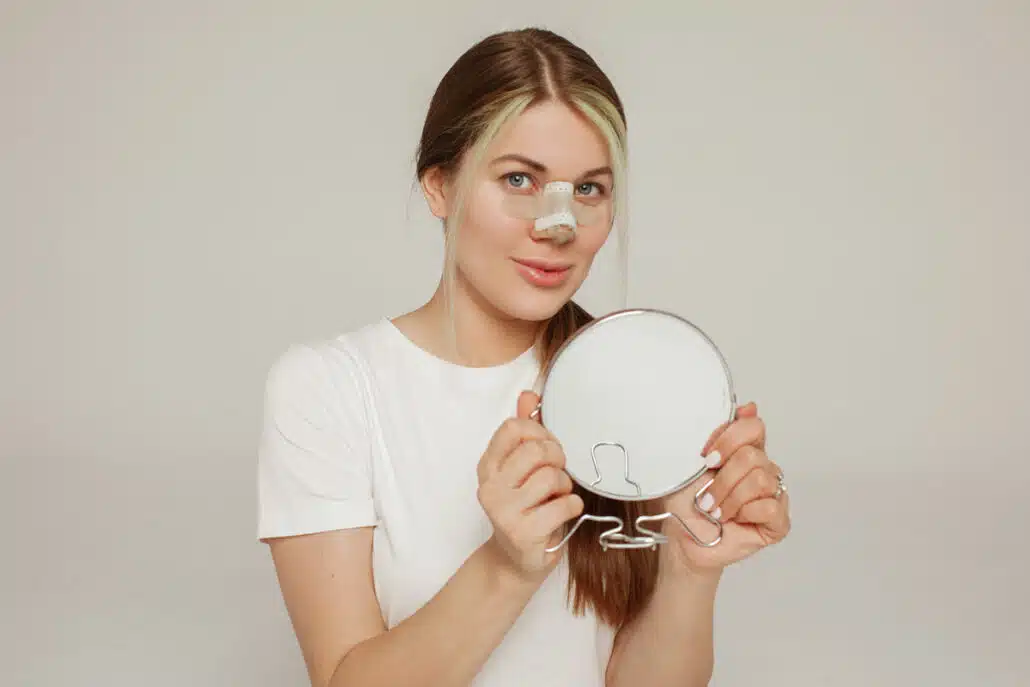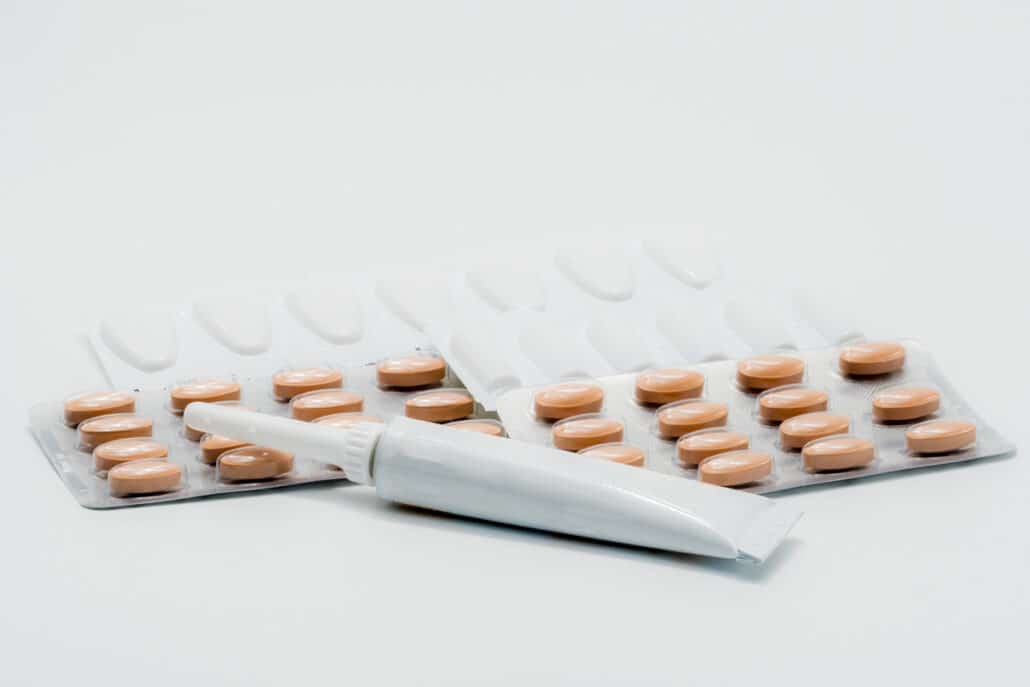How to Care for and Treat an Open Rhinoplasty Scar

Ever wondered how a procedure like open rhinoplasty could enhance the look of your nose, but worried about potential scarring?
This in-depth article takes you through the process, from the initial consultation to the final recovery stages. The incision technique used in open rhinoplasty may result in visible scars, but don’t panic, there are ways to manage it!
Even though there is a chance of scarring, the procedure’s many benefits make it the first choice for many people who want to make big changes to their noses. Want to know more? Read on!
Understanding Open Rhinoplasty and Scarring
Open rhinoplasty is a plastic surgical procedure typically used for extensive reshaping of nasal bones or when precise work on the nasal tip is required. The surgeon cuts through the columellar tissue, which is the tissue between the nostrils. This lets them see the structure of the nose in great detail. This invasive method gives the surgeon more control, but it could leave scars that can be seen.
Despite the risk of scarring, open rhinoplasty is still the procedure of choice since it can fix functional and cosmetic problems with the nose.
Going Through the Open Rhinoplasty Procedure

Open rhinoplasty procedures are performed by experienced surgeons who meticulously strategize and execute various techniques. First, cuts are made in the area around the nose. We reveal the bones and tissues of the nose so that we can see everything clearly and be more precise. Next, the nasal bones are reshaped or moved depending on the patient’s needs, such as to straighten faces that aren’t straight.
Blood supply is a critical concern during this phase. The surgeons ensure that it is not compromised during the procedure, thus promoting faster recovery. The open approach to rhinoplasty facilitates the surgeon’s ability to precisely sculpt the nose to achieve the desired outcomes.
Because there is an extra cut in open rhinoplasty, it takes longer for the swelling and bruises to go away than in closed rhinoplasty. However, the benefits it offers for complicated cases are much greater than the small problems it causes during the healing phase.
The goal of any rhinoplasty process and cosmetic surgery is to create a natural, attractive result that harmonizes with the rest of your face. With open rhinoplasty, the surgeons have a direct view of the nasal structures, which helps them perform more precise and detailed work.
Consulting with Your Surgeon Before Surgery
A very important part of the New Jersey rhinoplasty process is the evaluation. This is when you and your rhinoplasty doctor talk about your goals, look at your nose, and make plans for the surgery. Surgeons usually look at important things like your health history and what changes you want to make to your appearance. Knowing about these things helps the surgeon make a surgery plan that meets the patient’s needs and keeps the natural look.
During the consultation, the surgeon creates a comfortable environment for the patient to voice any concerns or questions about the different rhinoplasty techniques. It’s essential to have the right rhinoplasty surgeon who supports you throughout your journey, from consultation to final post-op follow-up.
Pre-Surgery Preparation to Reduce the Risk of Excessive Scarring
Following your surgeon’s pre-operative instructions to the letter is one of the greatest strategies to lessen the likelihood of extensive scar tissue following an open rhinoplasty. A patient should abstain from aspirin and ibuprofen, two medications that influence blood clotting, for at least one week before to surgery. Additionally, for the two weeks preceding surgery, it is imperative that you refrain from smoking and drinking.
These simple steps are essential for mitigating the risk of excessive scarring or any other untoward complications. Additionally, follow a balanced diet and get adequate rest prior to your rhinoplasty procedure for best outcomes.
Secure Your Safe Treatment Experience with Dr. Daniel G. Becker.
Join our satisfied clients who’ve experienced safe, effective treatments.
Caring for Your Scar After Surgery
After a rhinoplasty procedure, the recovery period typically lasts for approximately three to six months.
The healing process will be slow throughout this period and vary based on the person’s condition and the surgeon’s working approach. Over the first two weeks following surgery, you could have swelling, bruising, and pain.
These symptoms gradually decrease, but minor swelling may persist for several months. Surgeons usually recommend patiently waiting to fully appreciate the final shape of the nose during this recovery stage. With time, the healing process makes the nose more natural.
Cleaning and Dressing of the Wound Site
As a patient, it’s very important to take extra care during your healing to avoid getting infections and other problems. Facial plastic surgeons know how to take care of scars well, so always do what they say. This could involve ensuring that your nasal passages are kept clean and free from bacteria, especially if the surgery involves this area.
Refrain from touching your face unnecessarily as your hands carry a multitude of bacteria. Surgeons’ instructions often include using specific creams and ointments to keep the scar area moist and aid its healing. Most likely, your face plastic surgeon will give you full instructions on how to take care of your wounds while you heal.
Regularly changing your dressings and practicing good hygiene prevent infection and minimize scar formation. Be mindful of the cleaning agents you use on your open rhinoplasty scar. While gentle cleansers should always be used, harsh chemicals and astringents should be avoided. It is best to stick to mild soap or cleansers specifically designed for facial skin and scars. Be sure to rinse well and then pat the area dry with a clean towel.
Medication and Pain Management Options

If you had an open rhinoplasty in New Jersey, your doctor will probably give you painkillers to help you get through the healing process. Prescriptions for non-steroidal anti-inflammatory meds (NSAIDs), like ibuprofen or acetaminophen, are given the most often. These medicines help lower inflammation and swelling. Your doctor may also give you medicines to help keep you from getting sick.
In addition, your doctor may recommend over-the-counter creams to reduce the appearance of scars. Some of these products contain silicone, which is known to reduce the risk of scarring. Make sure to speak with your surgeon about any medications or topical treatments you are considering, as some may not be recommended for use after surgery.
Avoiding Direct Sun Exposure and Hard Activities
Regular, moderate activities can help improve your blood circulation, which can expedite skin healing techniques. But keep in mind that too much time in the sun can slow down the healing process. To keep your face safe, wear clothes that cover it or use sunscreen. This also helps keep your scar from getting darker.
Massage Therapy for Scar Tissue
Massage therapy is a great way to help treat scar tissue that forms after open rhinoplasty surgery. Massage helps to break up the fibrous scar tissue and improve blood flow, which can speed up the healing process. It can also reduce inflammation and pain associated with scarring. It’s important to start massaging the area after the nose job New Jersey, as this will help the skin heal properly and reduce scarring.
Nutritional Supplements and Diet
It’s crucial to maintain a healthy diet with adequate amounts of vitamins A, C, and E to support healing. Eating foods high in omega-3 fatty acids can also help reduce the appearance of scars by promoting collagen production. Finally, drinking lots of water helps keep your skin hydrated and healthy while aiding in the healing process.
Monitoring Your Progress
Monitoring the healing process is an essential phase of post-surgery care. Meeting your surgeon regularly, typically weeks after surgery, ensures the well-being of the patient. During these check-ups, surgeons assess the recovery and provide valuable insights to improve the patient’s healing process.
In the first 3-6 months, you will have frequent appointments, which will lessen over time. This continuous monitoring and adjusting of treatment, according to the patient’s response, is a crucial part of the healing process, leading to faster recovery.
Potential Complications From Open Rhinoplasty Scarring
External scarring from an open rhinoplasty procedure can affect the aesthetic appearance of the nose. Scarring may cause the surrounding connective tissue to grow abnormally, leading to breathing difficulties and other functional issues that might require a second procedure.
Hypertrophic scars are common after open rhinoplasty surgeries. They are raised and red scars that can be caused by genetic predisposition or excessive scar tissue formation. Sometimes, additional treatments like steroid injections or laser therapy may be needed for hypertrophic scars. However, if the scarring is minor and doesn’t affect breathing, it can be managed by following care instructions and maintaining good hygiene.
When to Seek Medical Attention Regarding Your Open Rhinoplasty Scar
It is important to monitor your open rhinoplasty scar for any signs of infection. These can include redness, swelling, warmth, or tenderness in the area surrounding the scar. If you experience any of these symptoms, it is essential to contact your doctor immediately as they may require medical attention. It’s also important to pay attention to any sudden changes in skin color around the scar, as this could be a sign of an underlying issue.
Treatments for Rhinoplasty Scars
Once an open rhinoplasty patient has healed, they may still be left with a visible scar. Fortunately, there are a few options to help reduce the appearance of the scar. Laser treatments and chemical peels can help remove old scars and reduce discoloration. In addition, fillers can help plump out the skin and reduce the appearance of scarring. Your doctor can recommend which treatment is best for your individual case.
Revision rhinoplasty can be necessary for those who experience excess scar tissue after their initial open rhinoplasty procedure. During revision rhinoplasty, the surgeon may remove scar tissue, reduce raised borders and ridges, and refine the overall shape of the nose. This will help to improve symmetry and reduce noticeable scars that may remain.
Consult with an Experienced Surgeon
If you’re considering an open rhinoplasty, it’s important to discuss proper care and management of scars with your doctor. Dr. Becker is an experienced surgeon in the field of facial plastic surgery with extensive experience in open rhinoplasty. He can help you understand the best ways to care for your scar and ensure successful healing. Schedule an appointment with Dr. Becker today to learn more about how he can help you achieve your desired results!

